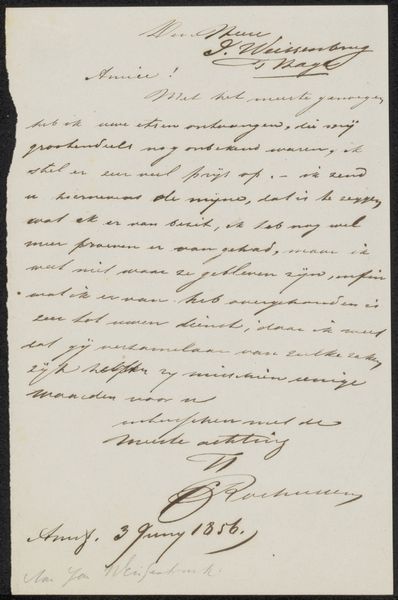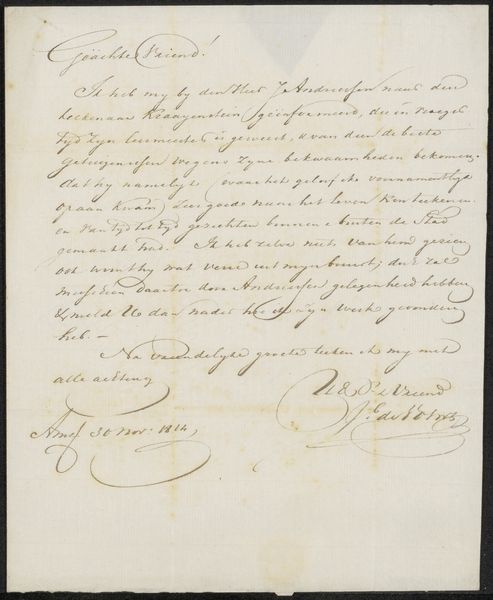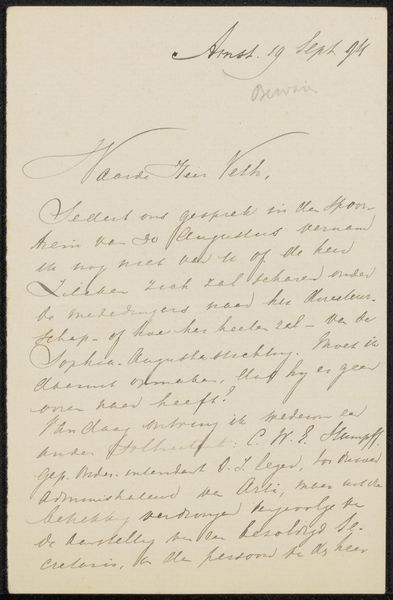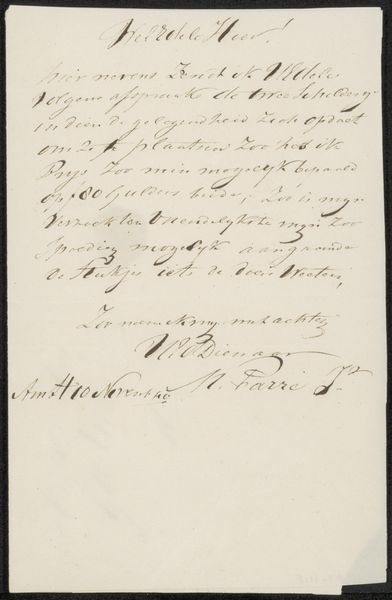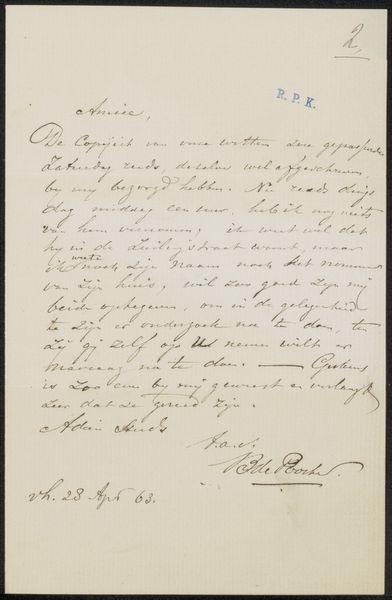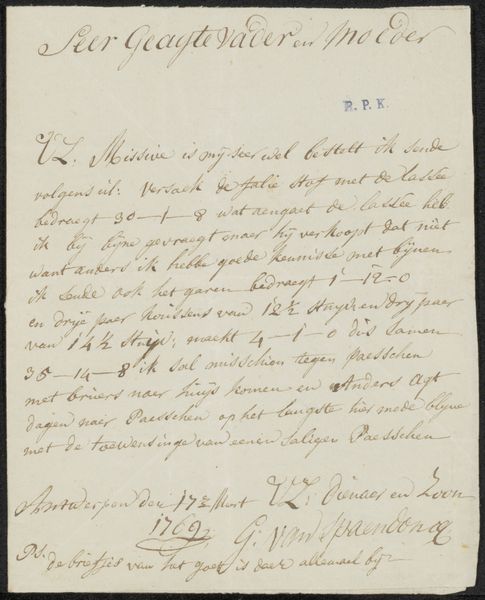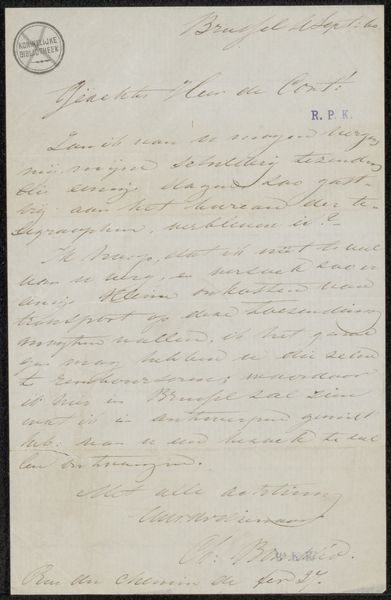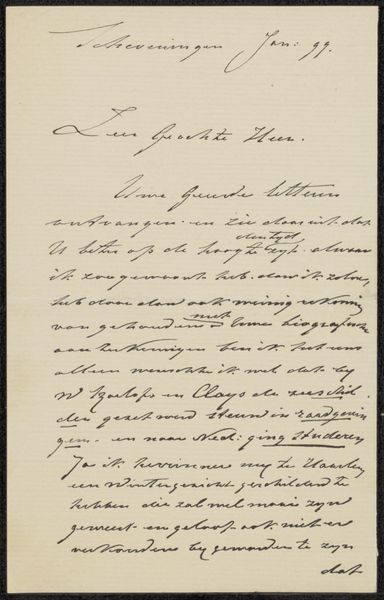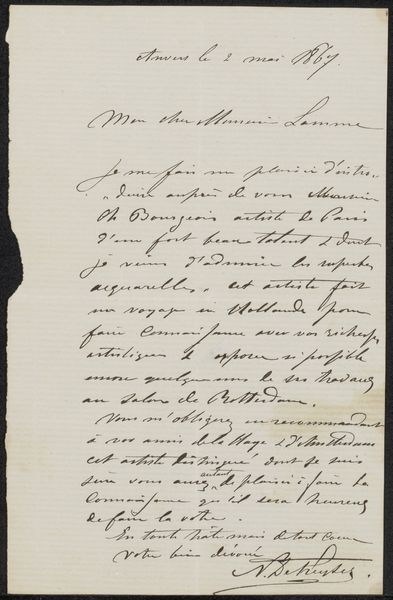
drawing, paper, ink, pen
#
drawing
#
pen sketch
#
paper
#
personal sketchbook
#
ink
#
pen
Copyright: Rijks Museum: Open Domain
Curator: We're looking at "Brief aan Philip Zilcken," possibly from 1899, rendered in ink on paper by Johan Gram. What springs to mind when you see this? Editor: It immediately conveys a sense of intimacy. The handwriting is delicate, almost faded, giving it a fragile, personal feel. It feels like a secret glimpsed through time. Curator: Considering Gram's wider social circle, this letter likely plays a part in understanding late 19th-century artistic networks in the Netherlands. Correspondence served not only personal but also professional purposes. How might that dynamic influence your reading of its visual components? Editor: Well, handwriting itself is incredibly symbolic. The slant, pressure, and flourish of each stroke reveals character, status, even intention. And letters, even more so than a signature, solidify Gram’s artistic identity. Curator: I agree that even casual correspondence acted as a vehicle for self-representation, which could lead to reinforcing specific ideologies in terms of professionalism or gender. Looking at the date, late 1890s, there were clearly changing norms concerning labor and class as a broader societal context for interpersonal written interactions. Editor: Certainly. Looking at that salutation and the closing—the language, even for those times, reads very formal. What would you suppose was the topic discussed by these artists? Curator: Apparently Gram acknowledges receipt of the addressee's "opdracht om een artikel te schrijven," so maybe he accepted a task related to writing or illustration work in Algeria, possibly from Bakker Korff or Jan Veth. Editor: The ink’s consistency draws my attention too. In older letters it could reveal all sorts of things, such as the conditions it was written under or perhaps even where or when the artist mixed the ink if the letter was produced en plein air, for example. The symbolism of darkness and light and visibility seems heightened in letters when looking closely. Curator: Indeed. It prompts considerations about access to literacy. These are usually only available to the upper classes or intellectuals during this historical moment, suggesting both status and position from where this artwork comes from, a place where communication meant having power. Editor: A reminder that seemingly mundane objects are filled with complex human meaning. Thank you! Curator: An interesting lens through which we can examine otherwise hidden power dynamics!
Comments
No comments
Be the first to comment and join the conversation on the ultimate creative platform.
